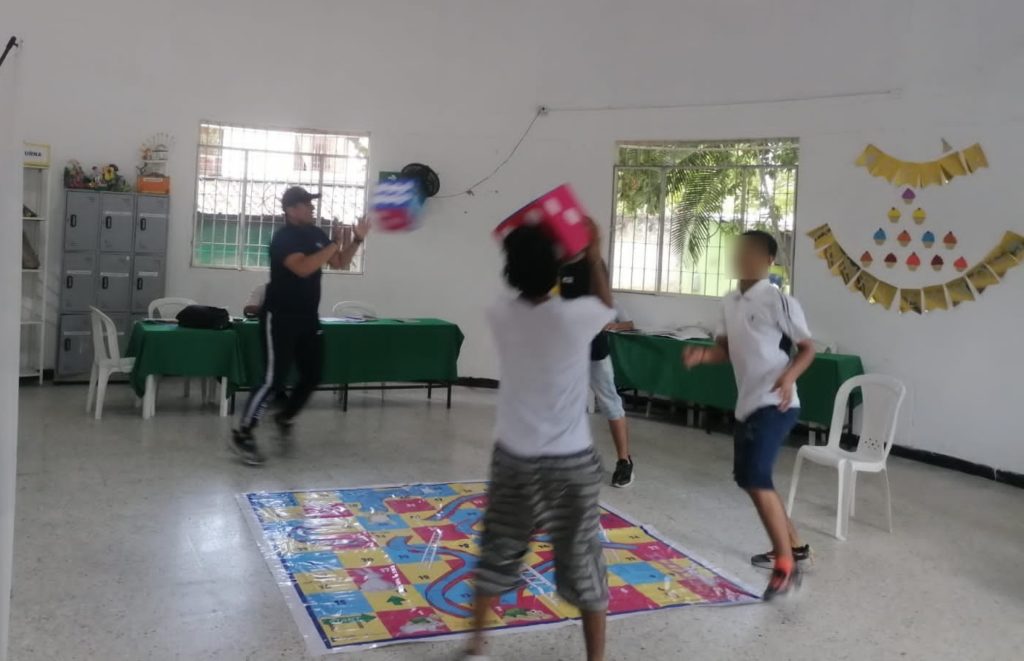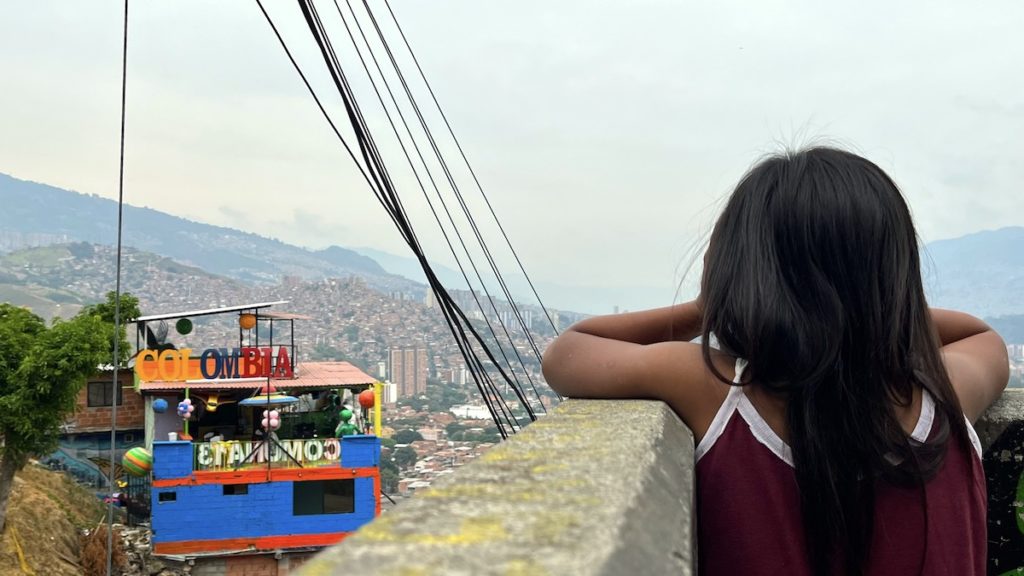
Sexual violence against minors in Colombia is of concern to the authorities. Due to the scandal produced by the case of the foreign citizen accused in Medellin of being sexually involved with two underage girls, and the media stir generated, society is becoming aware of the reality of a crime that is currently on the table of the Colombian Prosecutor’s Office.
According to reports of the National Police Crime Statistics, between January and August 2023, there were 8,295 sexual crimes against minors in the country; of which 4,605 were against children and 3,690 against adolescents.
At the end of 2023, State agencies responsible for human rights reported that “given the worrying figures reported on sexual violence against children and adolescents in Colombia,” they had asked the director of the Colombian Institute of Family Welfare (ICBF), a public agency that oversees the rights of minors, to know the progress made in the creation of an “early warning” system. This system aims to gather information to provide an immediate response for the prevention of sexual violence and the protection of this vulnerable population.
Sexual violence on the rise in Colombia
The Prosecutor’s Office also stated that between January and August 2023, the National Institute of Legal Medicine and Forensic Sciences reported 12,899 legal medical examinations for alleged sexual abuse in early childhood, infancy, and adolescence.
Likewise, the figures for children and adolescents who have entered the ICBF protection system for sexual violence are disturbing. Between January 1 and August 31, 2023, 11,135 records were reported, of which 9,705 cases were against female victims and 1,425 against male victims. Bogota, Valle del Cauca, Atlantico, Cundinamarca and Antioquia registered the highest number of entries.
In view of this, public agencies of the State reiterated the call to raise awareness among authorities, society and the family, about the forms of violence that particularly threaten children and adolescents; also calling for coordination between the competent entities during the process of activation of the care route, and especially in the follow-up of the reported cases.
Situation in Colombia’s educational environments
Cases of bullying and sexual violence against children and adolescents in educational environments are of special concern for the control agencies, which are issuing decisions and advancing monitoring and control to mobilize effective actions against these aggressions. This is in response to the increase in public complaints for alleged behaviors in which various educational institutions in the country have been involved.
According to the control entity, in the first eight months of the year 2023, 1,351 cases of school aggression were registered as alleged crimes against freedom, integrity, and sexual education, of which 968 victims were female. Likewise, of the total of these registered situations, 1,123 have occurred in public educational institutions and 228 in private schools.
In addition to this, there are other situations involving sexual violence in the educational environment, in which for the year 2023, as of August 30, a total of 2,411 have been registered; of these, 2,050 have allegedly occurred within educational institutions, in social networks by teachers or fellow students and in pedagogical outings.
Risk factors for child abuse
Medical experts have established tables to calibrate the “risk factors” that exist for child sexual abuse, both in the environmental, social, and family environments. On the one hand, in an environmental setting, situations such as multiple cohabitations (with uncles, cousins, or grandparents) or with strangers to the family nucleus, overcrowding, lack of privacy for showering, and others are obvious risk factors.
As for the social environment, various elements increase risk and are linked to the social interaction of a minor with people who present some of the following characteristics: confused behavior; offering gifts for free; little social empathy; verbal or physical aggressiveness; promiscuity; difficulties in establishing relationships with people of another sex; poor impulse control; indifference to situations of machismo; overvaluation of sexual activity or aggressiveness against the weak, among others.
Finally, in the family environment, a distinction is made between multiparent or reconstructed families and single-parent families. In the first group, risk situations include elements such as the separation of a parent or the presence of stepfathers or stepmothers. In the second group, dysfunctional relationships in the couple; physical or psychological violence; dysfunctional family dynamics; a maternal figure victim of abuse; a paternal figure with addictions; parents with a strong moralistic or religious discourse; a maternal figure unable to express affection, fragile, or avoiding conflicts; and delegating the maternal role to one of the children, among others.
Sexual violence and poverty, a common bionomial
The relationship between sexual violence and poverty is a very frequent binomial. One only has to look at the figures for these crimes at the geographic level to confirm this. In the case of the city of Bogota, the country’s capital, of the 4,000 cases of violence against women, minors or adults, detected in 2023, most occurred in southern neighborhoods with little economic development. Thus, for example, the locality where most cases were registered was Ciudad Bolivar, followed by Suba, Kennedy, Bosa, Engativa, and Usme.
Deficient, if not non-existent, family structures, high rates of alcohol and drug consumption among adults, and a lack of prospects are societal factors that are reflected in the family environments of many of the minors who are victims of these crimes.
Similar experiences in other parts of the world show that economic development goes hand in hand with a decrease in this type of crime, both within and outside the family. According to Mauricio Medina, a professional in family medicine in Bogota, “understanding children as beings (needing) special protection, and not (seeing them) as a means of economic income, is surely imperative and fundamental, and is the path towards the eradication of sexual violence”.

Family environment, the first barrier
The data show that much of the sexual violence against minors takes place within the family environment. This is precisely the first pillar in the prevention of this abuse. According to the health services Sura Foundation, it is the family that “must play the role of protective environment for children and adolescents, it is there where they should be given love, care, support and understanding”.
“The family must guarantee the fulfillment of children’s rights, it must be involved in the training process and be a scenario of reflection where learning and skills are enhanced. However, it is in the family nucleus where most of the violations against children occur, among them, sexual violence, a crime that can be difficult to detect, among other reasons, due to the lack of communication between parents and children, the emotional and affective abandonment that is exercised towards the youngest and the difficulties that family members have to dialogue and solve problems,” says the report of the Sura Foundation.
Sex tourism in Colombia
Another aspect that the authorities are aware of in cases of sexual violence is so-called sex tourism, i.e., foreigners who come to developing countries to commit sexual crimes.
For Dr. Mauricio Medina, these cases respond to “an evident sense of impunity” felt by criminals in countries with deficient police and legal structures. The recent case of the American with the two girls in Medellin is evidence of this fact since the foreign citizen was released, despite the seriousness of the situation and the logical possibility of evading justice, in a misguided police procedure, a case that is still being judicially studied in Colombia.
The awareness campaigns that these countries have been carrying out for years have proven to be totally insufficient. The rate of crimes related to sex tourism is not decreasing, although it is also true that these cases are now coming to light much more frequently. For Mauricio Medina, the responsibility must be sought not only in the aggressor “of course”, but also “in the family members who, due to incompetence or economic necessity, encourage these situations”.
Dr. Medina is also very critical of “the image that has often been given to the outside world”. In this sense, hypersexualizing “young girls” and “exporting an image of beautiful women proudly” as a tourist attraction is not justified, and “does not help at all”. Medina advocates eradicating the image of sun and sex that, “even unconsciously” many times “we as a country have sold abroad”.

Options for the future: awareness and development
Although this type of sexual violence against minors has always existed, it is only since the second half of the 20th century that it has been effectively criminalized. This is the first barrier to overcome: understanding that these behaviors are neither legally nor socially acceptable.
Another obvious difficulty is getting victims to tell what happened, as they are often subjected to threats and deception, taking advantage of their emotional immaturity, as well as experiencing shame and fear of rejection. However, the first step, according to all experts, is to raise awareness among adults.
Family, school, and health services are the most effective control bodies to raise the alarm at the first sign of these cases. They are the most common environment for any minor, and ensuring the welfare and rights of children and adolescents is a constitutional mandate in countries such as Colombia, as stated in Article 44 of the Constitution.
Understanding that states must strive for equitable economic development, which also reaches these historically excluded sectors, will open the way to reducing cases of abuse that can forever mark the lives of people too young to understand the magnitude of the drama.
See all the latest news from Colombia and the world at ColombiaOne.com. Contact our newsroom to report an update or send your story, photos and videos. Follow Colombia One on Google News, Facebook, Instagram, and subscribe here to our newsletter.

